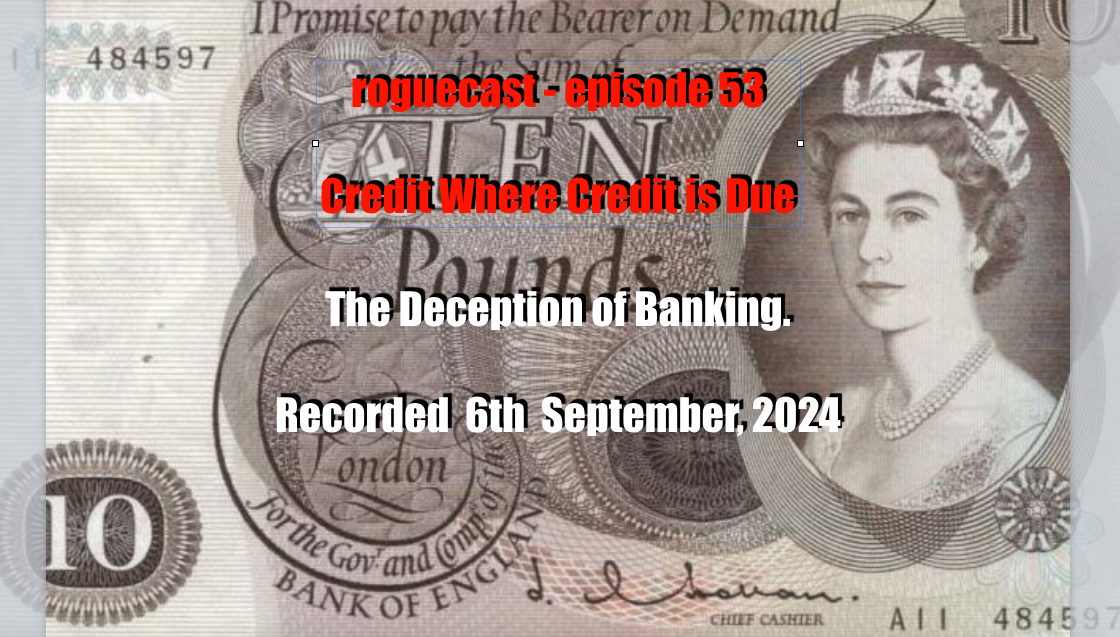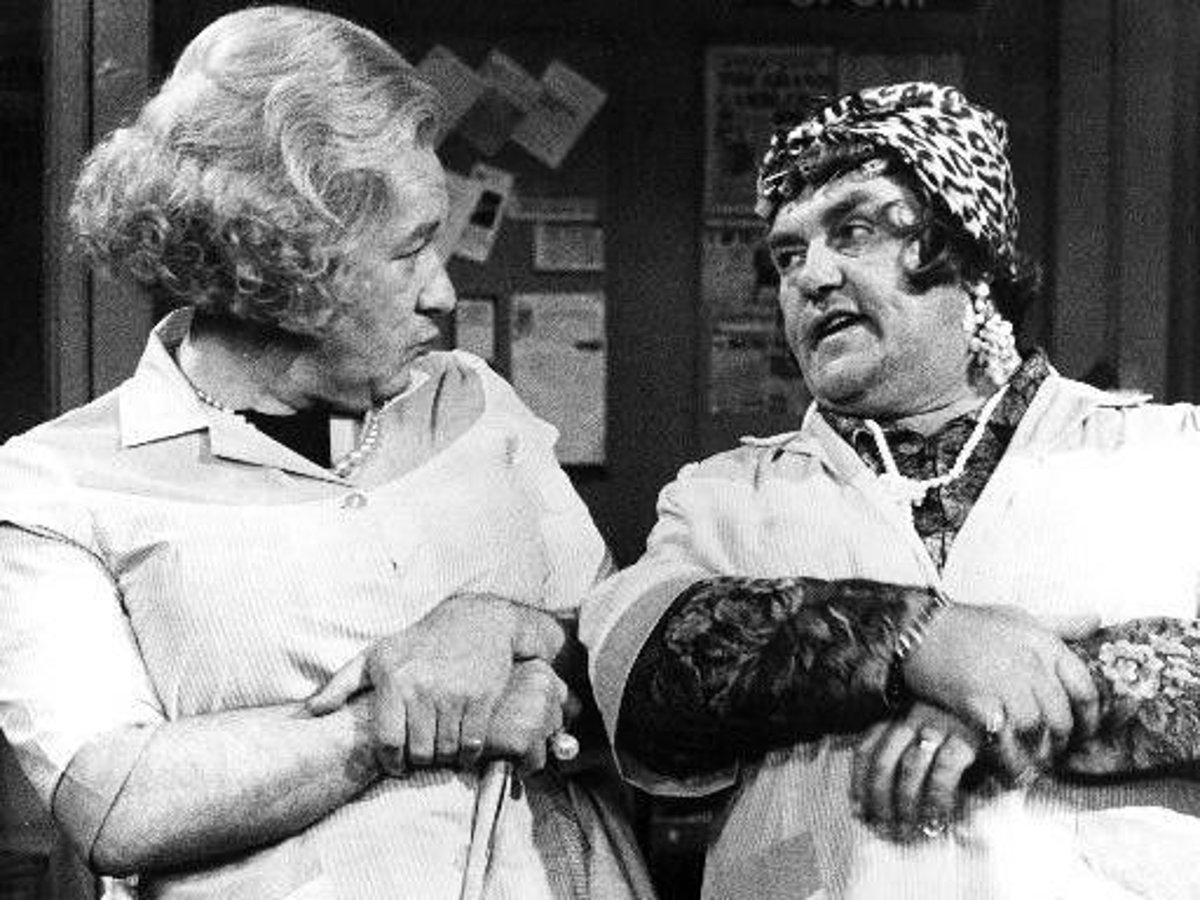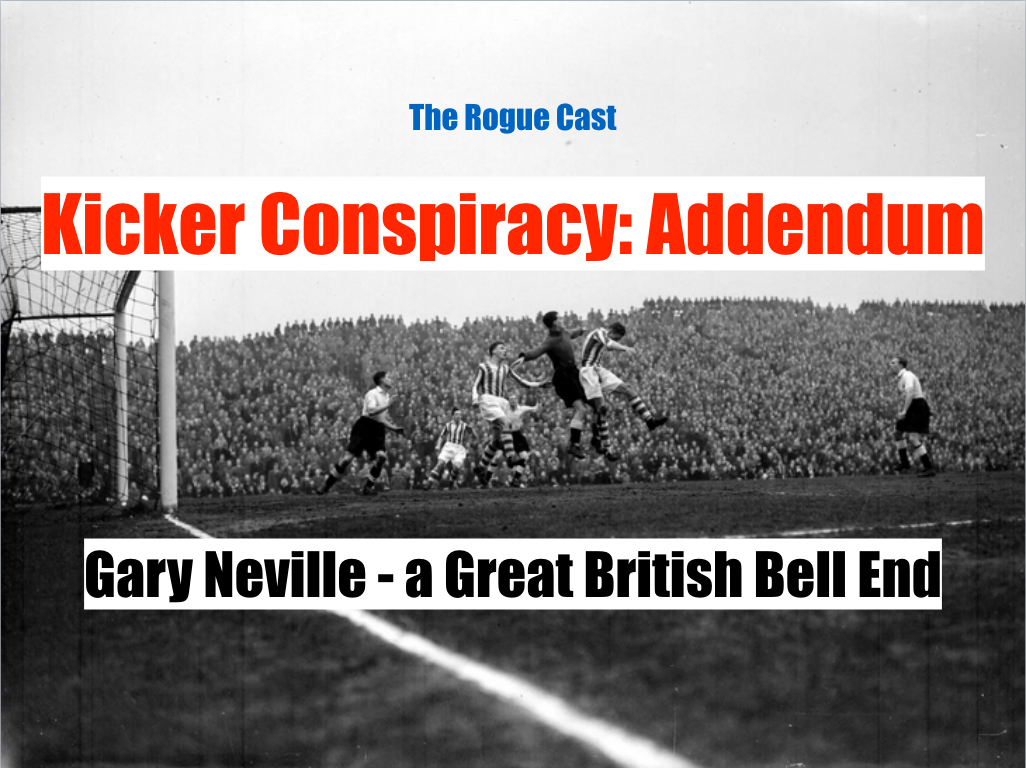Credit creation and the Deception of Banking.
In this ramble through the woods adjacent to Beauvale Priory, in Nottinghamshire, I examine the issue of banking and fake debt, with particular reference to the swindle inherent in every mortgage. The entire edifice of what we call money is, 100% credit based, as detailed in my previous articles, A Promise to Pay and The Promissory Note.
I encourage all viewers to first read the articles at my site, www.roguemale.org in order to avail yourselves of the unassailable facts of the matter. Each of the references can be read in yesterday’s post.
As stated previously, I will be offering a Webinar which will cover each aspect of this work on the financial servitude of modern day banking.
Many thanks to all those who have helped to keep my work going via their donations through the ‘Buy me a Coffee’ button https://www.buymeacoffee.com/modb
Please note, in a somewhat ironic turn of events, I have been denied any form of credit across a variety of platforms – I am currently banned from accessing my Faceborg account and Google/YouTube is literally blocking me from uploading my latest RogueCasts, so please like and share this post as far and wide as you are able and be sure to subscribe to the Rogue Male email list for all notifications.
Appendix and further references:
Authorities and References:
Rose and Hudgins (2013), Bank Management and Financial Services, McGraw-Hill
Ellinger, Lomnicka and Hare (2011), Elllinger’s Modern Banking Law, 5th edition, Oxford University Press
Henry Dunning Macleod (1906), The Theory and Practice of Banking, 2nd Volume, 6th impression, Longmans, Green & Co.
Richard A. Werner, D.Phil. (Oxon), various publications
1. Rose and Hudgins (2013), Bank Management and Financial Services, McGraw-Hill
p. 539
“Chapter 16, Lending Policies and Procedures
“16-7 Parts of a Typical Loan Agreement
“The Promissory Note
“When a lending institution grants a loan to one of its customers, such an extension of credit is accompanied by a written contract with several different parts. First, the promissory note, signed by the borrower, specifies the principal amount of the loan. The face of the note will also indicate the interest rate attached to the principal amount and the terms under which repayment must take place (including the dates on which any instalment payments are due).”
p. 540
“The promissory note is a negotiable instrument. This customer-signed note represents that part of the loan process where money is created. When a borrower defaults, lenders generally sue for recovery of their funds based on the content of this note.”
2. Ellinger, Lomnicka and Hare (2011), Elllinger’s Modern Banking Law, 5th edition, Oxford University Press
p. 389
“Promissory notes are used to crystallize the maker’s promise to pay a given amount (often a specific instalment payable under a facility) to the payee. They are widely used in respect of all types of lending contract…”
p. 445
Promissory Notes
“… are principally issued to secure the repayment of loan instalments or sums due…”
“The principal advantage of a promissory note for the payee is that he may either receive early payment by discounting the instrument to a third party or sue for the face value of the instrument if dishonoured at maturity. In the latter case, the payee may obtain summary judgment for the amount of the instrument, as the defences that arise out of the underlying transaction are not necessarily available to an action on the note…”
“…promissory notes and bills of exchange differ in form – the latter involves the drawer giving the drawee an order to make payment, whilst the former involves the maker giving a promise to pay – so that an instrument taking the form of a bill of exchange may be reclassified as a promissory note and vice versa.
BEA 1882, s.5(2). See also Mason v. Lack (1929) 45 TLR 363; Haseldine v. Winstanley [1939] 2 KB 101.
“…the Bill of Exchange Act 1882 in general applies with the necessary modifications to promissory notes.
“The legal requirements for a valid promissory note are the same as for bills of exchange: there must be an unconditional promise in writing signed by the maker to pay a sum certain at a fixed or determinable future time to the order of a specified payee or to bearer. Haseldine v. Winstanley [1939] 2 KB 101. s.83(1). See also City Link Melbourne Ltd. v Commissioner of Taxation [2004] FCAFC 272, [33]
“This definition can cover an ‘IOU’ embodying a promise to pay, a bank cheque, or any other document howsoever named that fulfils the statutory definition. See Linac v. Lehmann [2001] DCR 718, [33]-[35]
“As regards payment, there is no requirement to present a promissory note to the maker…
3. Henry Dunning Macleod (1906), The Theory and Practice of Banking, 2nd Volume, 6th impression, Longmans, Green & Co.
(Henry Dunning Macleod, Barrister at Law, Inner Temple)
p. 311
“…the business of banking is not to lend money, but to create Credit.
p. 370
“…all banking advances are made, in the first instance, by creating credit.
p. 372
“A banker never lends money, in the first instance; we have already explained that the very essence of banking is to create Credit, or liabilities payable to bearer on demand.
… All banking advances, then, are made by creating Credit, or Deposits; and whether this Credit is transferred from one person to another … in no way affects its nature or its quantity.
p. 480
“Hence credit or debt in legal, commercial and economical language, means a right of action against a person for a sum of money. Such a right, credit or debt is a chose-in-action, and is included under the terms goods and chattels.
p. 482
“Definition of Instruments of Credit or Debt
Any written record of a fact is termed an Instrument. Any written evidence of a debt is termed an Instrument of Credit or of Debt.
A written contract by which one person is bound to pay (1) a certain sum of money; (2) to a certain person; (3) at a certain time; is termed an Obligation, or Security for Money, or a Valuable Security.
…
A written Promise made by one person to pay absolutely and at all events (1) a certain sum of money; (2) to a certain person; (3) at a certain time; is in modern language termed a Promissory Note, or, shortly, a Note.
…
A mere acknowledgement of a debt, not containing a promise to pay, is usually termed an I O U.
A Bill, Note or I O U is always a chose-in-action, that is, it operates as a charge, or Credit, against the person of the Debtor.
p. 407
“If a customer wants an advance, the banker discounts his customer’s Promissory Note; … He does this in exactly the same way as he discounted a bill. He buys the Promissory Note from his customer, and in exchange for it he creates a Credit in his favour in his books, which is termed a Deposit.
p. 408
“These banking Credits are… in fact, Capital created out of Nothing.
“Thus the student must carefully observe that in the technical language of commerce a “banker” is a trader who issues his own credit, in various forms, for money and debts. This species of business, no doubt, originated with the money changers: but yet money changing is not “banking”. Nor are “bankers” money lenders: in all cases whatever they issue nothing but their own credit…
4. Richard A. Werner, D.Phil. (Oxon)
Empirical evidence that banks do not lend money but create credit:
Werner, Richard A. (2016), A lost century in Economics: Three theories of banking and the conclusive evidence, International Review of Financial Analysis, 46, July, 361–379, online: http://www.sciencedirect.com/science/article/pii/S1057521915001477 https://doi.org/10.1016/j.irfa.2015.08.014
Werner, Richard A. (2014). Can Banks Individually Create Money Out of Nothing? – The Theories and the Empirical Evidence, International Review of Financial Analysis, 36, 1-19, http://www.sciencedirect.com/science/article/pii/S1057521914001070 https://doi.org/10.1016/j.irfa.2014.07.015
Details on just how banks are able to ‘create money out of nothing’, while non-bank firms cannot do so:
Werner, Richard A. (2014). How do banks create money, and why can other firms not do the same? An explanation for the coexistence of lending and deposit-taking, International Review of Financial Analysis, 36, 71-77, http://www.sciencedirect.com/science/article/pii/S1057521914001434 https://doi.org/10.1016/j.irfa.2014.10.013
The above publication shows that the credit is created by the bank incorrectly and without obvious justification re-classifying one type of liability (its accounts payable liability arising from its obligation to ‘lend money/sums’ to the borrower in the loan contract) as another type of liability called ‘customer deposit’ – the latter being a form of credit that is commonly used to pay for transactions. No customer nor the bank made this deposit.




